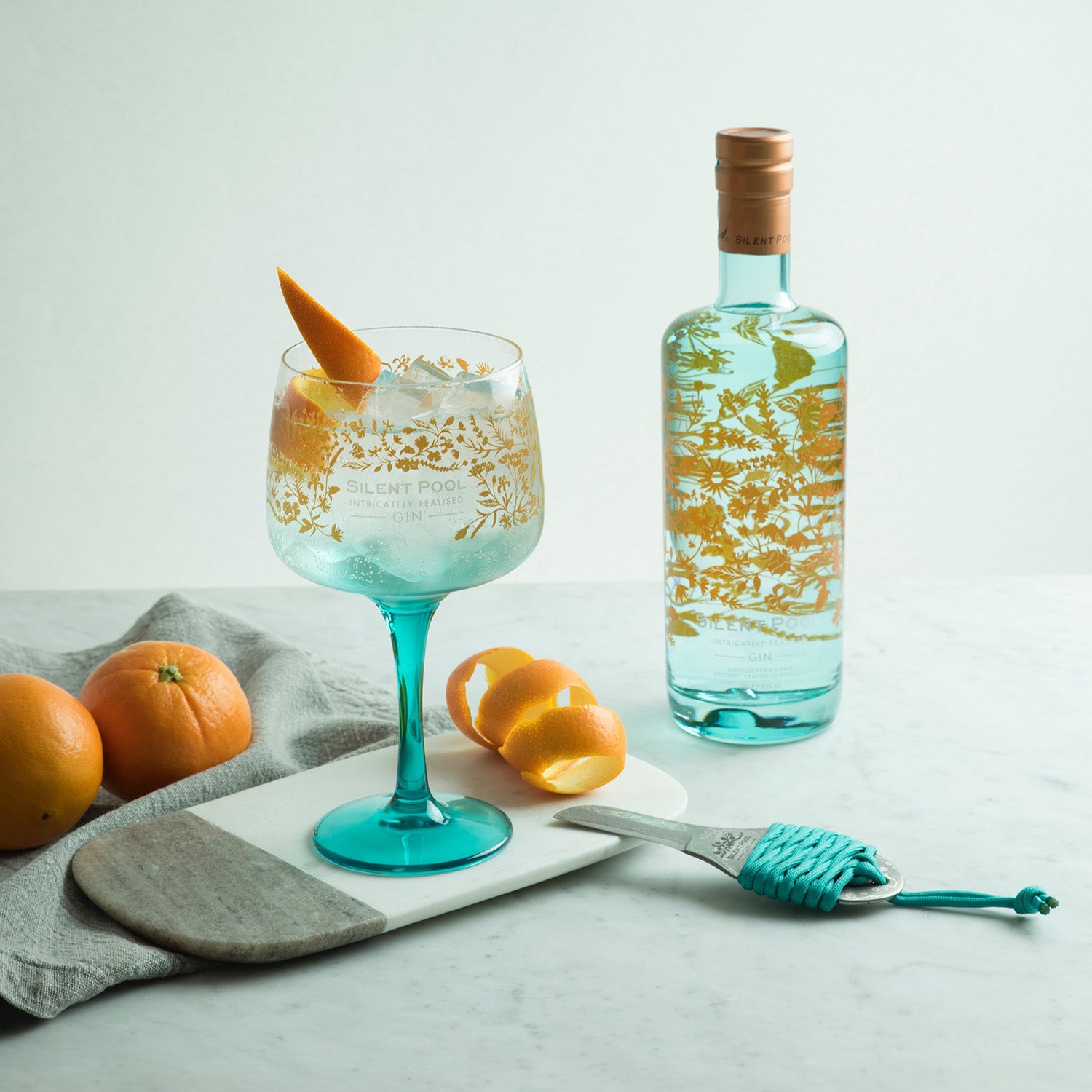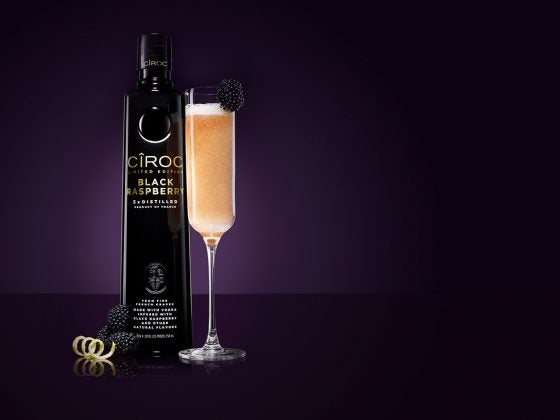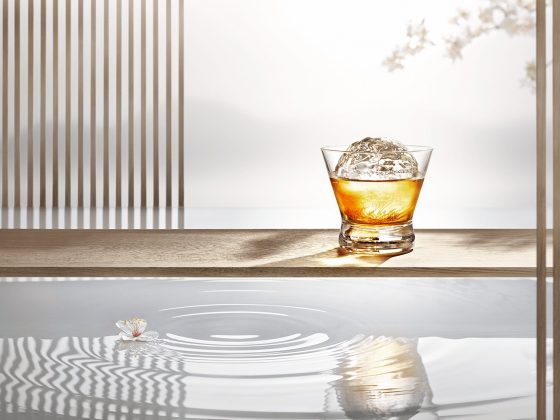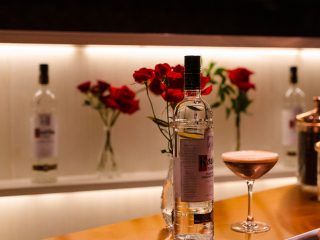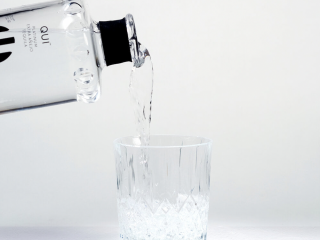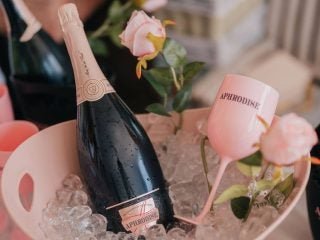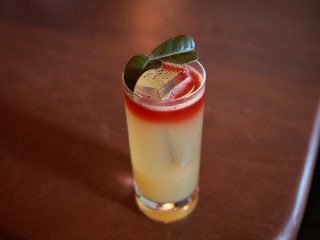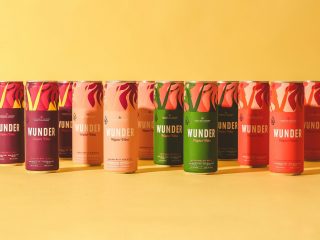Traditionally Americans have enjoyed drinking vodka and whisky, but lately the European popularity of gin is increasingly growing in the US as well. But what is gin?`
Some believe gin was created by Franciscus Sylvius, who was a dutch chemist in the 17th century as an attempt to cleanse the blood of those suffering from kidney disorders. Sylvus named his creation at the time genever. Mass production of gin soon followed in England with King William the 3rd, using his grudge against the French as a way to ban expensive liquor imports and essentially made gin affordable to the masses. Since then Gin has risen to an elevated stature where it is considered a Gentleman’s (and Ladies’)beverage, more sophisticated than its counterparts and a sign of elegant drinking.
Gin is one of the main six in the liquor family, it is a light bodied liquor made from a mash of cereal grain, usually corn, rye, barley and wheat. The main flavor and aroma characteristics are contributed by the very apparent juniper berries, that have a pungent and piney taste. Gin by nature is a neutral spirit, so what makes the biggest difference in the taste of gin is its botanicals. Botanicals are the mix of flavors that go into the gin, they can be herbs, spices, juices and more. Because gin is defined so much by its botanicals.
There are 3 ways to serve a gin. The tried and tested Gin and Tonic for a long drink with bold structure sure to refresh the consumer and leave them ordering another.
Sipping gin neat is a great way to get to know a particular liquid/brand. This sophisticated introduction takes place in the nose through aroma, taste on the palate, and ,if aged, colour of the liquid. Guided sipping accompanied by knowledge of the brand and it’s practises is a sure fire way to dissect every last drop and will have you exchanging notes like an expert. Sipping without is still a great way to put your senses and current knowledge to the test. The third way Gin is celebrated is in a cocktail. As gins come in all shapes and sizes, profiles of textures and flavours, their use in cocktails can be a tactical one
This appreciation of expertise and quest for discovery of the next marriage of flavours is why Gin of good quality is enjoyed neat across the globe by connoisseurs and beginners alike.
With gin becoming so popular, we’ve seen a multitude of new Gin Bars and gin palaces emerge across the UK. People enjoy drinking socially more and more and the classic G&T has become a favored among trendy cocktails.
Arguably the finest Gin to appear on the scene in the last few years is the Award Winning Silent Pool Gin. With its botanicals sourced from the area around its creation, Silent Pool Gin embodies the essence of the British Countryside, with unmistakable notes of Lavender and Rose.
Their signature gin, comes in a beautiful blue glass bottle with stunning engraving detailing the legend of the Silent Pool area, with 24 botanicals carefully chosen for their uniqueness. All the botanicals work together in unison to afford a romantic, complex flavour. Fresh floral and clarifying citrus notes are grounded by earthy and spicy cassia bark and cubeb. The smooth finish is achieved with the help of local honey. Refreshingly individual, intricately realised gin at an ABV of 43%.
We spoke to a representative from Silent Pool who gave us pointers on the various ways a real gentleman drinks his Gin.

The most classic ways are a Gin Martini (shaken not stirred) which is the favorite tipple of the most famous gentleman of all Mr James Bond. Then there’s the standard Gin and Tonic or G and T as it’s often referred to, the quality of the Gin as well as the quality of the Tonic are both equally important, a good Gin can be spoiled by a lesser quality tonic. Silent Pool recommends Fever Tree Tonic as it’s a high grade Tonic served in a glass bottle with crisp clean ingredients.
Gin is a hugely versatile category, the broad definition of what a botanical is means the variety of ingredients that can be used are almost endless. As long as Juniper Berries are the main ingredient and the final product is above 37.5%ABV – it can be called Gin. With such vast variations of styles, characteristics and flavour profiles, there is no strict formula to what is the best way of consuming it. How you prefer will always be the best way to drink this fascinating liquor we call Gin.




